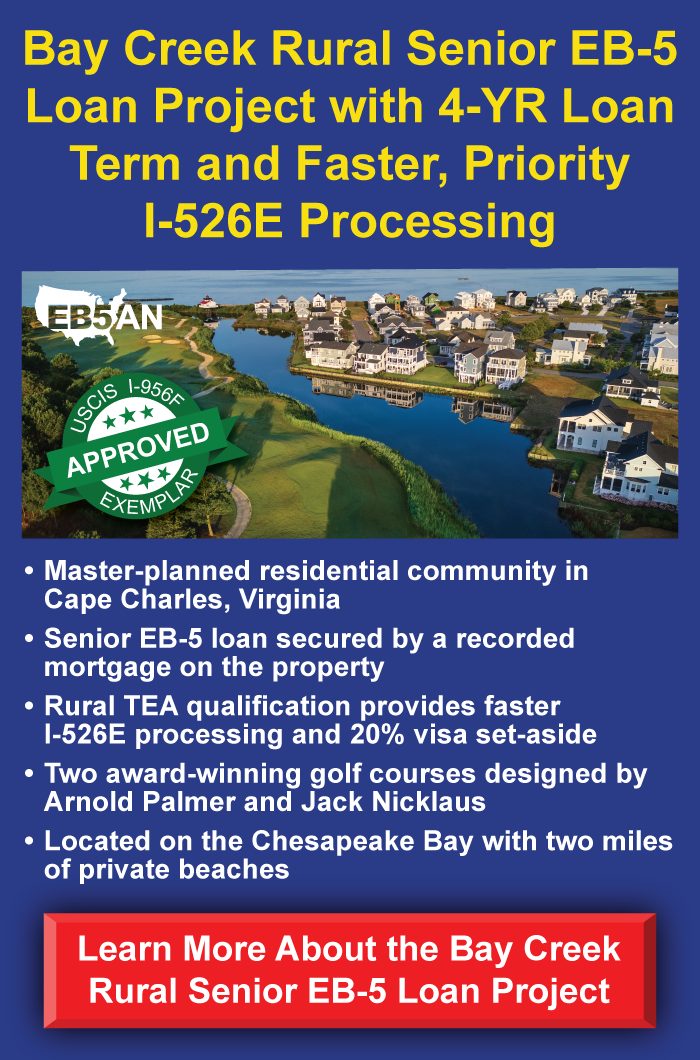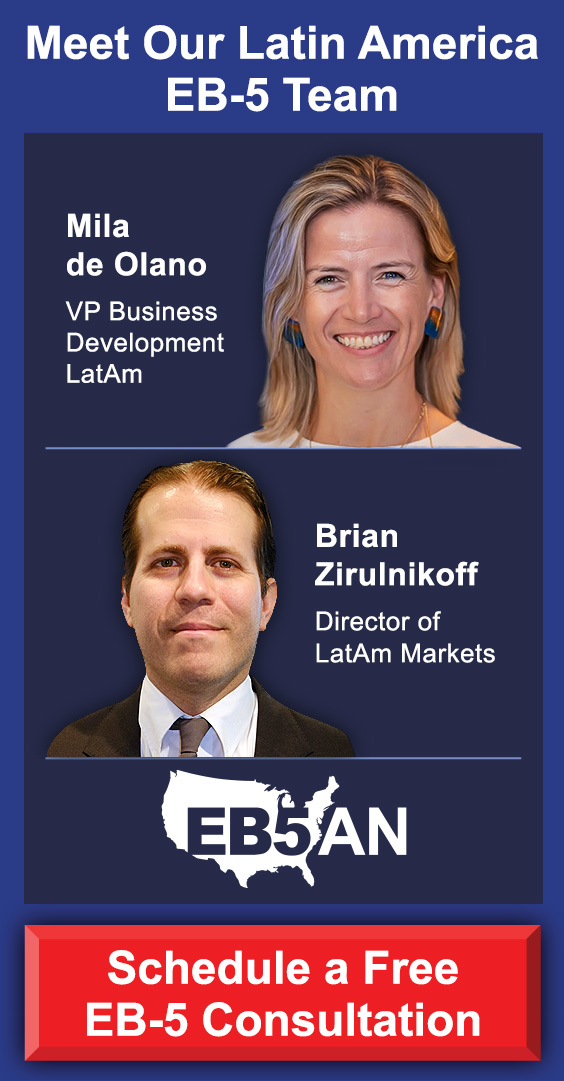As an H-1B worker in the United States, the uncertainty surrounding your visa status can be stressful and concerning, especially with the potential for delays, denials, or changes in immigration policies. Fortunately, there are alternative pathways to secure long-term residency in the U.S. for individuals like you, one of which is through investment visas. Among the most popular choices are the E-2 and EB-5 visas.
But which one is better for H-1B workers in distress? In this article, we’ll compare the two options.
Understanding the E-2 and EB-5 Visas
Key Differences Between the E-2 and EB-5 Visas
How EB5AN Supports Investors Through the Green Card Process
Understanding the E-2 and EB-5 Visas
Before diving into the differences between the E-2 and EB-5 visas, it’s important to understand what each visa entails. Both are designed for individuals who wish to invest in the U.S. economy, but they each come with distinct requirements and benefits.
E-2 Visa
The E-2 visa is a non-immigrant visa for individuals from countries that have a treaty with the U.S. It allows investors and their employees to live in the U.S. temporarily while managing a business they have invested in. To qualify for an E-2 visa, applicants must demonstrate that they are investing a substantial amount of capital in a U.S.-based business and that they will be actively involved in its operations. The E-2 visa is renewable, typically for two-year periods, as long as the business continues to operate and meet the visa requirements. However, it’s important to note that the E-2 visa does not provide a direct path to permanent residency (Green Card).
Since Indian nationals make up the majority of H-1B workers in the U.S., it’s important to note that India is not an E-2 treaty country. As a result, if you’re an Indian H-1B holder exploring long-term options to stay in the U.S., the EB-5 program may be the most viable path for you.
EB-5 Visa
The EB-5 visa is an immigrant visa that provides a direct route to a Green Card, which means permanent residency in the U.S. By making a qualifying investment in a U.S. new commercial enterprise, EB-5 investors can secure Green Cards for themselves, their spouse, and unmarried children under the age of 21. The minimum investment required for the EB-5 visa is typically $1,050,000, although in targeted employment areas (TEAs), the investment amount is reduced to $800,000.
What sets the EB-5 visa apart from the E-2 visa is that it offers a clear pathway to a Green Card without the need for periodic renewals. Once you become a permanent resident, you are no longer subject to the uncertainties that come with maintaining a temporary visa status.
Key Differences Between the E-2 and EB-5 Visas
Now that we understand the basics of both visas, let’s take a closer look at the key differences between the E-2 and EB-5 visas, particularly in the context of H-1B workers who may be facing distressing situations with their current status.
Immigrant vs. Non-Immigrant Status
One of the most significant differences between the E-2 and EB-5 visas is that the EB-5 visa is an immigrant visa, while the E-2 visa is a non-immigrant visa. For H-1B workers, this distinction is crucial.
The E-2 visa requires you to maintain non-immigrant status, which means you must prove that you have no intention of abandoning your foreign residence. Additionally, the E-2 visa is renewable indefinitely, but the renewal process can be time-consuming and stressful. Each time you renew, you may face scrutiny over your business operations and the status of your investment. If your E-2 visa is denied during a renewal, you could be forced to leave the U.S.
In contrast, the EB-5 visa grants permanent residency to investors and their families. Once your EB-5 petition is approved and you receive your Green Card, you no longer have to worry about visa renewals or non-immigrant status. You become a permanent resident, with the freedom to live and work anywhere in the U.S. and the ability to apply for U.S. citizenship after a few years.
Path to a Green Card
For H-1B workers, securing a Green Card is often a primary goal, as it provides long-term stability and security. The EB-5 visa offers a direct route to a Green Card by making a qualifying investment. This is a major advantage over the E-2 visa, which does not provide a direct path to permanent residency.
With the EB-5 visa, after making the required investment, you and your immediate family members (spouse and children under 21) can apply for a Green Card. You will receive conditional residency for two years, during which time you must demonstrate that your investment has created or will create the required number of jobs. Once the conditions are met, your status can be upgraded to full permanent residency.
On the other hand, the E-2 visa does not lead directly to a Green Card. While there are certain avenues through which an E-2 visa holder can eventually apply for a Green Card (such as employment-based petitions or family-based sponsorship), the process is much more complex, uncertain, and time-consuming.
Investment Flexibility
The EB-5 visa requires a significant investment—typically $1,050,000 or $800,000 in a targeted employment area (TEA)—and mandates the creation of at least ten full-time jobs for U.S. workers. While this is a considerable financial commitment, the EB-5 program allows for a more passive investment approach, especially when investing through a regional center. Regional centers manage the day-to-day operations of the project, which can be appealing to investors who prefer not to be directly involved in running a business.
In contrast, the E-2 visa does not have a fixed minimum investment amount, but the investment must be “substantial” in relation to the business. E-2 investors are also required to play an active role in directing and developing the enterprise, making it better suited for individuals who want to be hands-on entrepreneurs.
Family Benefits
Both the E-2 and EB-5 visas allow investors to include their immediate family members (spouse and children under 21) on their application. However, the key difference lies in the long-term benefits. With the EB-5 visa, your family members can receive Green Cards and enjoy the benefits of permanent residency, including the ability to live, work, and study in the U.S.
For E-2 visa holders, while your spouse can apply for work authorization, the overall family benefits are more limited. Additionally, your children must maintain their status as dependents and may face challenges as they approach 21 years of age, as the E-2 visa does not offer the same permanent residency protections as the EB-5 visa.
How EB5AN Supports Investors Through the Green Card Process
For H-1B workers facing uncertainty with their visa status, the EB-5 visa offers a more reliable, stable, and secure route to permanent residency and a Green Card in the U.S. Unlike the E-2 visa, which requires periodic renewals and does not offer a direct path to permanent residency, the EB-5 visa provides a clear pathway to a Green Card by making a qualifying investment.
While the investment required for the EB-5 visa may be higher, the long-term benefits, including permanent residency for you and your family, make it an attractive option for H-1B workers seeking stability and a future in the U.S. If you’re ready to explore your options for a more secure immigration status, the EB-5 visa could be the perfect solution.
EB5AN has helped more than 2,300 families from 70+ countries become lawful permanent residents of the United States. Our team has more than a decade of experience and offers clients first-rate, low-risk EB-5 regional center projects with a 100% USCIS project approval rate.
If you would like to know more about your U.S. permanent residency options, book a free call with our expert team today.









